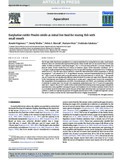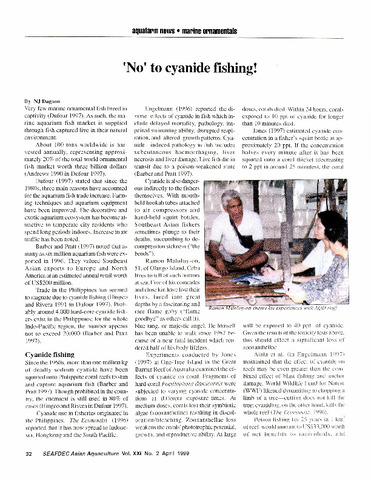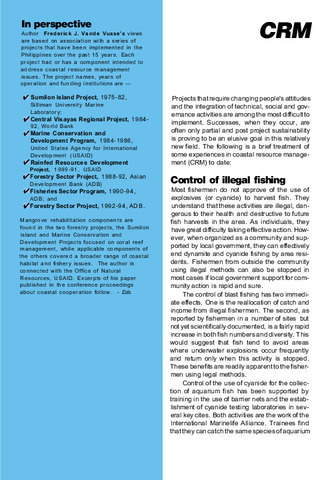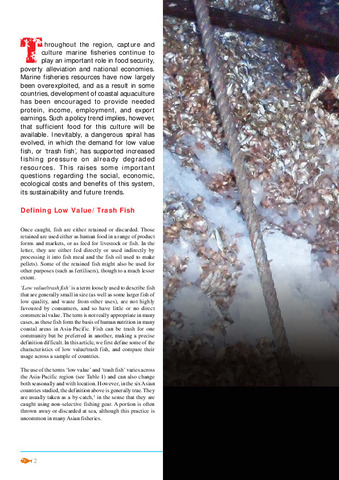Euryhaline rotifer Proales similis as initial live food for rearing fish with small mouth

View/
Request this document
Date
2014Page views
187Metadata
Show full item recordCited times in Scopus
Share
Abstract
The SS-type rotifer Brachionus rotundiformis is a common initial food for rearing fish larvae with a small mouth. However, there are commercially important fish species whose mouth sizes are too small to feed on SS-type rotifers. In 2004, we isolated a small (body length = 82.7 ± 10.9 μm; body width 40.5 ± 6.4 μm), flexible, and iloricate rotifer, Proales similis from an estuary in Okinawa, Japan. Under laboratory conditions (25 °C, 2–25 ppt) P. similis produced its first offspring on 2.5 to 2.8 days after hatching, and produced 4.3 to 7.8 offspring within 4.0 to 4.7 days life span. Batch cultured P. similis fed Nannochloropsis oculata suspension at 28.8 μg dry weight ml− 1 and cultured at 25 °C, 25 ppt filtered seawater, increased exponentially from 25 to 2400 ind ml− 1 after 11 days of culture with an overall intrinsic rate of natural increase (r) of 0.42 day− 1. The growth rate of P. similis was not significantly different when fed fresh N. oculata and super fresh Chlorella vulgaris-V12®. Total lipid per wet weight of P. similis fed by N. oculata and C. vulgaris were 2.4 and 2.6%, respectively. The compositions of eicosapentaenoic acid (EPA), docosahexaenoic acid (DHA), and arachidonic acid (ARA) of P. similis fed N. oculata were 23.2, 0.0 and 5.3%, respectively, while these were 11.0, 17.5 and 0.5% respectively, when fed C. vulgaris. The use of P. similis to feed small mouth fish including seven-band grouper Epinephelus septemfasciatus, rusty angelfish Centropyge ferrugata, and humphead wrasse Cheilinus undulatus showed that it is an excellent starter food for these species because of their high selectivity index and improved survival. In addition, P. similis was ingested by Japanese eel Anguilla japonica larvae with a complicated digestive system. The use of P. similis as starter feed for small mouth fish larvae is highly recommended.
Suggested Citation
Hagiwara, A., Wullur, S., Marcial, H. S., Hirai, N., & Sakakura, Y. (2014). Euryhaline rotifer Proales similis as initial live food for rearing fish with small mouth. Aquaculture , 432, 470-474. https://doi.org/10.1016/j.aquaculture.2014.03.034
Subject
Taxonomic term
Collections
- AQD Journal Articles [1215]
Related items
Showing items related by title, author, creator and subject.
-
'No' to cyanide fishing!
Dagoon, N. J. (Aquaculture Department, Southeast Asian Fisheries Development Center, 1999) -
CRM in the Philippines: Lessons learned
Southeast Asian Fisheries Development Center, Aquaculture Department (Aquaculture Department, Southeast Asian Fisheries Development Center, 1996)Philippine coastal communities can become capable fishery resource managers and that their management practices can become largely self-sustaining if the project approach focuses on assisting fishermen to learn how to help ... -
Prized commodity: Low value/trash fish from marine fisheries in the Asia-pacific region
Staples, Derek; Funge-Smith, Simon (Secretariat, Southeast Asian Fisheries Development Center, 2005)The use of the terms 'low value' and 'trash fish' varies across the Asia-Pacific region and can also change both seasonally and with location. This article defines low value/trash fish as 'Fish that have a low commercial ...





